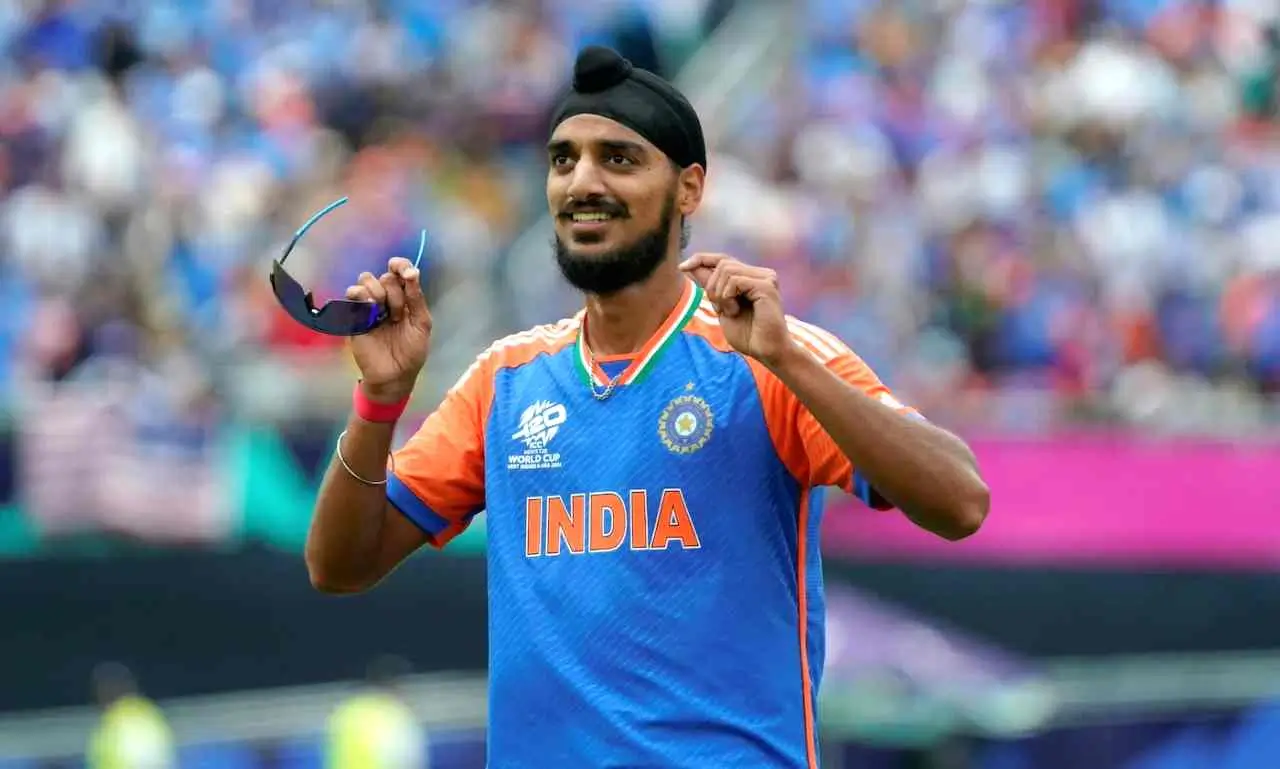India handed opportunities to fringe players in Abu Dhabi as Suryakumar Yadav won the toss and chose to bat first against Oman. This match, a dead rubber in Group A of the Asia Cup 2025, saw India resting Jasprit Bumrah and Varun Chakravarthy to manage workloads ahead of the Super Four stage. The decision opened doors for left-arm seamer Arshdeep Singh and pacer Harshit Rana, who both got their first appearances in the competition.
Arshdeep sits one wicket away from a special milestone, as he is on the brink of becoming the first Indian to claim 100 wickets in men’s T20 internationals. With Abu Dhabi conditions often helping seamers more than spinners, India fielded only two specialist spinners in Kuldeep Yadav and Axar Patel, with Abhishek Sharma providing a part-time option if required. Oman also made two changes, introducing Zikria Islam and Mohammad Nadeem into their XI.
For India, the focus is less on the result and more on testing their depth and flexibility ahead of tougher matches. Suryakumar confirmed the plan was to bat first and push players into unfamiliar roles. This is also the first international meeting between India and Oman, giving the Associate nation a chance to test itself against a full-strength Asian giant.
Arshdeep Singh Back for the Indian Team as Bumrah Rests

Arshdeep Singh’s return strengthens India’s bowling attack with variety and swing after his successful PBKS match performances. His left-arm angle brings a different challenge for opposition batters, and with one wicket needed for his T20I milestone, he enters the contest with motivation. India chose to rest Jasprit Bumrah to ensure he remains fresh for the Super Four, creating a rare chance for Arshdeep to make his mark and sharpen his rhythm.
Harshit Rana, another exciting pace option, has also been handed a chance to show his raw pace and control. Both bowlers will look to use Abu Dhabi’s seam-friendly conditions to apply pressure on Oman’s inexperienced top order. The recall of Arshdeep rewards his steady white-ball record and gives India a left-arm swing bowler who can attack in the Powerplay. If he strikes early, it will set the tone for the game and underline his value in India’s bowling plans.
What Arshdeep’s Return Means for India’s Attack
Arshdeep’s inclusion gives India a crucial balance in their pace lineup. His ability to move the new ball adds a tactical edge in the first six overs, where matches often swing in T20 cricket. A wicket or two in the Powerplay will put Oman under immediate pressure. This, in turn, relieves workload on senior pacers and allows Harshit Rana to bowl with freedom. A strong outing here would boost Arshdeep’s confidence and strengthen India’s trust in him before crucial Super Four battles.
India Likely to Make Batting Changes by Promoting Samson, Axar, and Hardik on Top
India’s batting order looks experimental for this match. The management is expected to push Sanju Samson higher up to test his adaptability against the new ball. Promoting Axar Patel or Hardik Pandya early offers flexibility, left-right balance, and a chance to prepare players for different roles. This approach highlights India’s intent to build depth in their batting, ensuring they are prepared if regular top-order players fail under pressure.
Suryakumar Yadav’s decision to bat first was aimed at giving his side experience in defending totals. India have not yet batted first in the competition, and this was a good opportunity to simulate that situation. These experiments rarely disturb the larger plan but provide clarity on player roles. A strong knock from Samson, Axar, or Hardik could boost India’s confidence and push them higher in the pecking order for the Super Four stage.
How Top-Order Tweaks Help India in the Super Four?
Promoting middle-order players to open is a strategy that tests their adaptability. Facing the new ball demands patience and technique, and those who succeed often add versatility to the lineup. For India, Samson, Axar, and Hardik bring different strengths—stroke play, left-arm variety, and power hitting. If these players perform well in such roles, India gain the luxury of flexible batting combinations in crunch matches against Pakistan or Sri Lanka. This practice game may define who gets promoted in high-stakes encounters.
Arshdeep Singh Will Take Advantage of Swing at the Start?
Abu Dhabi often offers movement for seamers in the opening overs. Arshdeep Singh will look to exploit this by pitching the ball fuller and targeting the stumps. Oman’s batting line-up has limited experience at this level, making them vulnerable to swing. If Arshdeep manages to get one or two early wickets, it could completely shift the balance of the contest.
His left-arm angle combined with control makes him a difficult proposition for right-handers. Early wickets will also allow Harshit Rana and Hardik Pandya to settle into their spells without scoreboard pressure. For India, quick breakthroughs would set the stage for their batters to play with freedom later. This match may also serve as a rehearsal for Arshdeep, who could be vital against stronger teams in the upcoming phase.
Why Swing Matters in the Early Overs for India?
Swing often dictates how the Powerplay unfolds in T20 cricket. A bowler who can move the ball consistently creates chances for catches behind or bowled dismissals. Arshdeep’s craft lies in his seam position and subtle pace variations, which force batters into errors. If India win the early battle with swing, they gain control over the flow of the match. That advantage, once established, can carry momentum into the rest of the innings and put opposition sides under lasting pressure.
Conclusion
India’s clash with Oman may not affect qualification, but it provides vital preparation ahead of the Super Four. Resting Jasprit Bumrah and Varun Chakravarthy shows the team’s confidence in their standing and their intent to give opportunities to bench players. Arshdeep Singh’s chase for his 100th T20I wicket adds an exciting subplot, while Harshit Rana’s debut allows India to test another pace option.
The batting order experiments, including possible promotions for Sanju Samson, Axar Patel, and Hardik Pandya, underline India’s approach of preparing for multiple scenarios. Success in these trials could prove decisive when India face tougher opponents in the coming week. Oman, on the other hand, will gain valuable experience from their first international meeting with India, regardless of the outcome.
This contest is more about learning, experimentation, and building momentum. For India, good performances from Arshdeep or Samson could shape their role in the next stage. For Oman, the exposure itself is a step forward. As the Asia Cup edges into the Super Four, both teams will take lessons from this encounter, though for India, the expectations remain far higher.















